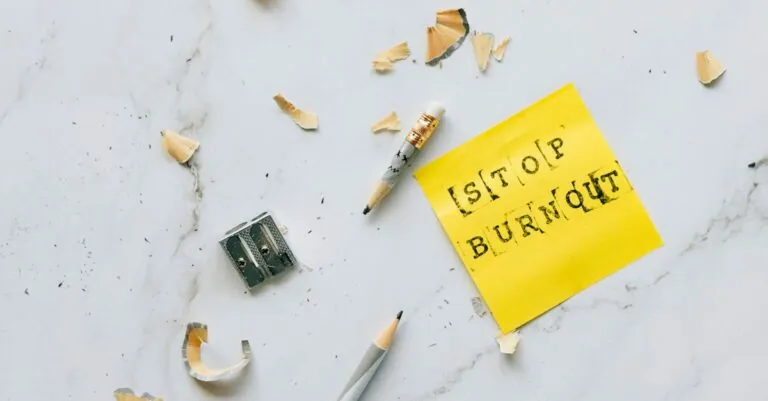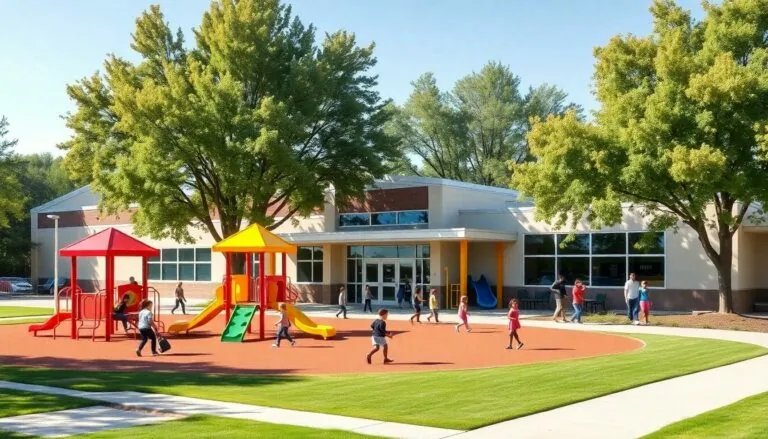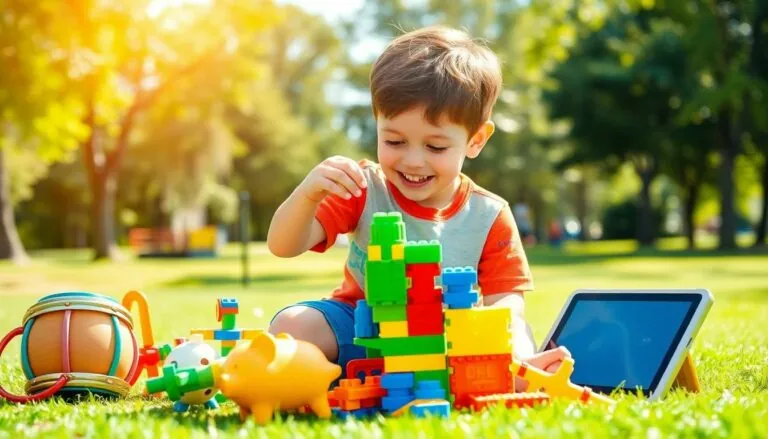Watching toddlers discover the world around them is like witnessing tiny scientists at work – they’re constantly exploring touching and learning. For 2-year-olds the right educational toys aren’t just playthings they’re essential tools that spark curiosity and development during this critical learning phase.
Parents often feel overwhelmed by the endless toy options flooding store shelves and online marketplaces. But selecting age-appropriate educational toys doesn’t have to be rocket science. The best toys for 2-year-olds combine fun with fundamental skills like problem-solving motor development and early language acquisition – turning everyday playtime into valuable learning opportunities.
Table of Contents
ToggleKey Developmental Milestones for Two-Year-Olds
Two-year-olds experience rapid growth across multiple developmental areas. These milestones guide parents in selecting appropriate educational toys that support their child’s learning journey.
Physical Development
Toddlers at age two master fundamental movement skills through active exploration. Their gross motor abilities include running steadily, climbing stairs with alternating feet, kicking balls forward, and throwing objects overhand. Fine motor skills develop as they stack 4-6 blocks, turn pages one at a time, and hold crayons with thumb and fingers. Hand-eye coordination improves as they complete simple puzzles with 3-4 pieces and manipulate shape sorters with increasing accuracy.
Cognitive Growth
Two-year-olds demonstrate expanding cognitive abilities through problem-solving and memory tasks. They recognize colors, understand basic counting up to 3 objects, and match identical pictures. Memory skills enable them to recall events from the previous day, follow two-step instructions, and identify objects in picture books. Their attention span extends to 5-6 minutes on engaging activities, allowing them to complete simple tasks independently.
Social and Emotional Skills
Social interactions become more complex as two-year-olds engage in parallel play with peers. They express a range of emotions, show empathy toward others, and participate in pretend play scenarios. Language development accelerates with a vocabulary of 50+ words, allowing them to form basic sentences and respond to simple questions. They demonstrate independence through self-help tasks like feeding themselves and removing simple clothing items.
Best Educational Toys for Fine Motor Skills
Fine motor skills development in 2-year-olds involves precise movements of small muscles in hands fingers. Educational toys targeting these skills enhance hand-eye coordination dexterity control.
Building Blocks and Stacking Toys
Wooden blocks provide essential fine motor practice through grasping stacking sorting activities. LEGO DUPLO blocks feature larger sizes perfect for toddler hands while maintaining developmental benefits. Stacking cups teach spatial awareness size relationships as toddlers nest stack explore different configurations. Magnetic building sets like Magna-Tiles allow creative construction while strengthening finger muscles grip strength.
Key features of effective building toys:
- Smooth rounded edges for safe handling
- Varied shapes sizes for diverse manipulation
- Lightweight materials suitable for small hands
- Multiple connection points to encourage exploration
- Bright colors to maintain engagement
Art and Craft Materials
Chunky crayons markers strengthen pincer grasp while encouraging creative expression. Playdough develops hand muscles through squeezing rolling pinching motions. Child-safe scissors introduce cutting skills under supervision. Large beads for stringing enhance eye-hand coordination finger dexterity.
Essential art supplies include:
- Extra-thick washable markers
- Palm-grip crayons
- Non-toxic modeling clay
- Oversized threading beads
- Easy-grip paintbrushes
- Finger paint paper
- Toddler-sized art tools
| Item | Size | Safety Feature |
|---|---|---|
| Crayons | 4 inches | Break-resistant |
| Beads | 1.5 inches | Non-chokeable |
| Brushes | 6 inches | Plastic handles |
| Scissors | 5 inches | Blunt tips |
Learning Through Play: Essential Educational Toys
Educational toys for 2-year-olds combine entertainment with developmental benefits, making learning an engaging experience. These toys create opportunities for cognitive growth while maintaining a child’s interest through interactive play.
Shape Sorters and Puzzles
Shape sorters enhance cognitive development through pattern recognition exercises. Simple wooden puzzles with 3-5 large pieces teach spatial awareness while matching cubes develop problem-solving abilities. Classic shape sorters feature geometric forms like circles squares triangles that fit into corresponding holes. Knob puzzles with pictures of familiar objects (animals fruits vehicles) strengthen hand coordination. Quality shape sorters include:
- Non-toxic wooden materials with smooth edges
- Large pieces measuring 2-3 inches for easy handling
- High-contrast colors for visual recognition
- Sturdy construction that withstands repeated use
- Multiple difficulty levels to grow with the child
Sensory Play Items
Sensory toys stimulate a toddler’s tactile exploration through varied textures sounds colors. Water tables filled with cups scoops boats encourage scientific discovery through pouring filling measuring. Texture boards containing different materials (smooth rough soft bumpy) expand vocabulary through hands-on learning. Popular sensory items include:
- Musical instruments (tambourines xylophones shakers)
- Kinetic sand with moldable properties
- Light-up toys with different sound effects
- Textured balls in various sizes
- Water-filled sensory mats for tactile stimulation
- BPA-free materials
- Easy-clean surfaces
- Multiple sensory elements
- Age-appropriate size components
- Varied texture combinations
Language Development and Creativity Toys
Language development toys enhance communication skills while fostering creative expression in 2-year-olds. These tools provide essential foundations for vocabulary growth through interactive play experiences.
Story Books and Flashcards
Picture books with simple storylines spark language development in toddlers through vibrant illustrations paired with basic words. Board books featuring everyday objects help children identify common items like animals, food or vehicles. Large-format books with texture elements encourage tactile exploration while building vocabulary. Educational flashcards displaying single objects with clear labels strengthen word recognition skills. Interactive lift-the-flap books maintain engagement through discovery-based learning.
Music and Sound Toys
Musical instruments designed for toddlers introduce rhythm patterns while expanding auditory recognition abilities. Xylophones produce clear tones that help children distinguish different sounds. Electronic toys with pre-recorded songs teach basic melodies through repetitive play. Percussion sets including drums, tambourines or maracas develop coordination through rhythmic movement. Sound-making toys featuring animal noises or vehicle sounds expand vocabulary through audio association. Push-button instruments with multiple sound effects encourage cause-effect learning while building fine motor skills.
| Popular Sound Toys | Benefits |
|---|---|
| Xylophone | Tone recognition |
| Drum set | Rhythm development |
| Electronic piano | Melody learning |
| Sound buttons | Cause-effect understanding |
| Musical books | Audio-visual association |
Safety Considerations When Choosing Toys
Safety remains paramount when selecting educational toys for 2-year-olds. Proper safety measures protect toddlers during their active exploration and learning phases.
Age-Appropriate Materials
Educational toys for 2-year-olds require non-toxic materials certified by the Consumer Product Safety Commission (CPSC). Organic wood toys feature smooth edges free from splinters, while plastic components contain BPA-free materials. Metal elements come with rust-resistant coatings to prevent deterioration. Safe materials include:
- Natural rubber with food-grade dyes
- Hard plastic labeled “non-toxic”
- Untreated solid wood with water-based finishes
- Fabric toys made from organic cotton or polyester
- Silicone components rated for children under 3
Size and Durability
Toys for 2-year-olds measure at least 1.75 inches in diameter to prevent choking hazards. Durable construction withstands repeated impacts from dropping, throwing or stepping. Key durability features include:
- Impact-resistant corners on building blocks
- Double-stitched seams on plush toys
- Reinforced joints in movable parts
- Break-resistant plastic materials
- Secured components that don’t detach
- Rounded edges with no sharp points
- Washable surfaces that maintain integrity
Tables and chairs sized for toddlers provide stability with bases measuring 12-15 inches wide. Storage containers feature ventilation holes meeting safety standards.
Top Educational Toy Brands for Toddlers
Melissa & Doug leads the educational toy market with their wooden puzzles, art supplies, and pretend play sets designed for toddlers. Their products feature non-toxic materials, sturdy construction, and vibrant colors that engage young minds.
Fisher-Price creates developmental toys that combine learning with entertainment through their Little People playsets, musical instruments, and activity centers. Their products incorporate interactive elements, multiple textures, and educational content suitable for 2-year-olds.
LeapFrog specializes in electronic learning toys that introduce numbers, letters, and basic concepts through interactive games and activities. Their products include touch-sensitive screens, clear audio feedback, and parent-controlled settings.
| Brand | Notable Products | Key Features |
|---|---|---|
| Melissa & Doug | Wooden Puzzles, Art Supplies | Natural materials, Durable design |
| Fisher-Price | Little People, Music Toys | Interactive elements, Multiple textures |
| LeapFrog | Learning Tablets, Activity Sets | Touch screens, Audio feedback |
| Hape | Building Sets, Push Toys | Sustainable materials, European safety standards |
| VTech | Learning Laptops, Smart Books | Age-specific content, Parental controls |
Hape produces eco-friendly educational toys using sustainable materials that meet European safety standards. Their building sets, push toys, and activity cubes emphasize motor skill development and logical thinking.
VTech offers electronic learning aids with age-specific content targeting early childhood development. Their learning laptops, smart books, and activity desks feature adjustable learning levels and parental controls.
PLAYMOBIL 123 creates chunky figures and playsets specifically designed for toddler hands. Their products focus on imaginative play while teaching basic concepts about community roles and daily activities.
Manhattan Toy Company specializes in developmental toys that promote sensory exploration and fine motor skills. Their product line includes soft blocks, activity centers, and textured toys made with premium materials.
Tips for Maximizing Learning Through Toys
- Establish a Dedicated Play Area
- Set up a clutter free space with adequate lighting
- Organize toys in low accessible bins by category
- Create rotation zones for different types of learning toys
- Include a soft mat or carpet for comfortable floor play
- Follow the Child’s Lead
- Observe which toys capture their attention
- Allow extended exploration with preferred items
- Introduce new toys during peak energy periods
- Respect when they’re ready to switch activities
- Encourage Interactive Play
- Sit at the child’s level during playtime
- Describe actions using simple clear language
- Ask open ended questions about the toys
- Demonstrate different ways to use each item
- Create Learning Routines
- Schedule short focused play sessions
- Mix quiet activities with active ones
- Include cleanup time as part of play
- Set aside specific times for new toy introduction
- Enhance Learning Opportunities
- Count pieces while playing with blocks
- Name colors during art activities
- Sort toys by size shape or function
- Connect toy activities to daily experiences
- Maintain Safety Standards
- Check toys regularly for loose parts
- Clean items between play sessions
- Remove damaged or broken pieces immediately
- Store small components out of reach
- Track Progress
- Note which skills improve with specific toys
- Document new achievements in play
- Identify areas needing more practice
- Adjust toy selection based on development
This structured approach transforms ordinary playtime into enriched learning experiences while maintaining engagement through purposeful toy interaction.
Conclusion
Educational toys play a vital role in shaping a 2-year-old’s developmental journey. The right toys can transform simple playtime into powerful learning opportunities that support physical cognitive and social growth.
Parents should focus on selecting safe age-appropriate toys that align with their child’s interests and developmental stage. From building blocks and art supplies to musical instruments and sensory play items each toy serves a unique purpose in fostering essential skills.
By choosing high-quality educational toys from reputable brands and following proper safety guidelines parents can create an enriching environment that nurtures their toddler’s natural curiosity and love for learning. The investment in appropriate educational toys today will help build a strong foundation for future learning success.




